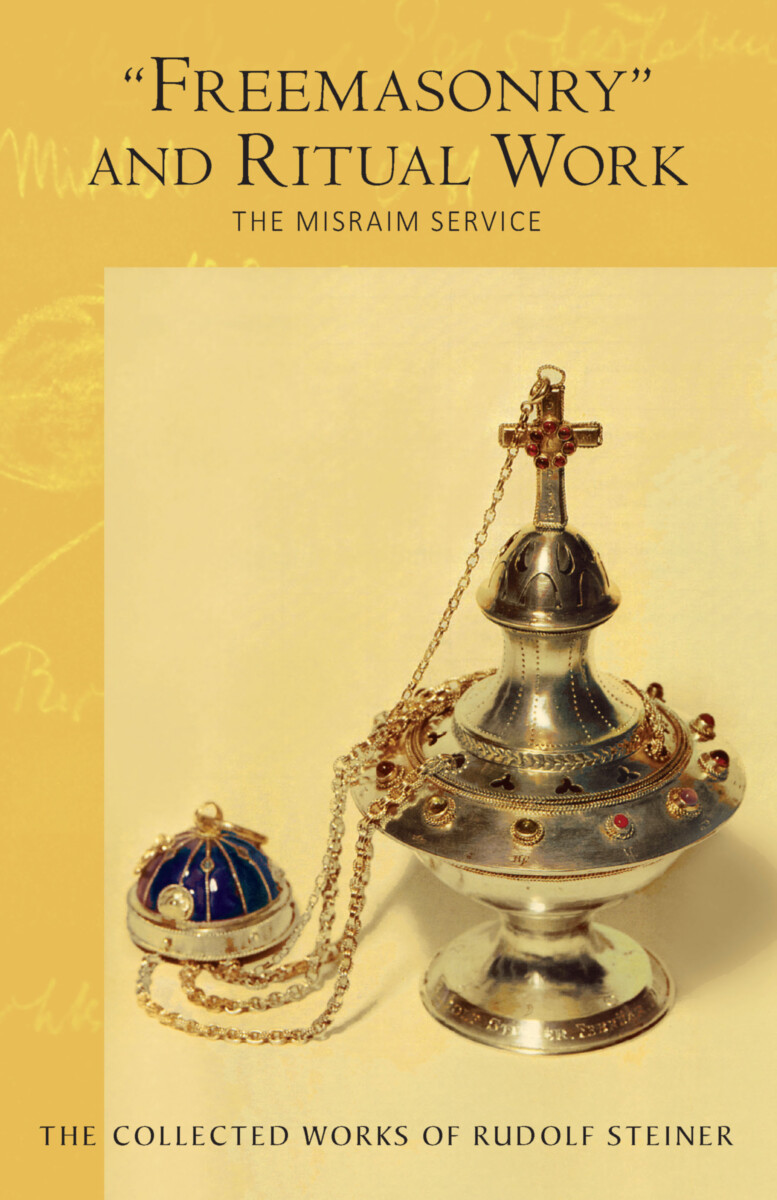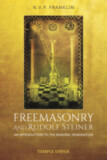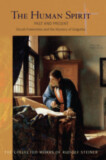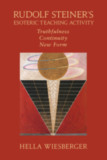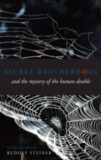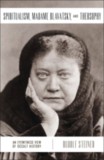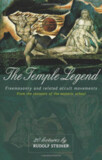Freemasonry and Ritual Work
The Misraim Service (CW 265)
- Publisher
SteinerBooks - Published
7th March 2007 - ISBN 9780880106122
- Language English
- Pages 632 pp.
- Size 6" x 9"
Letters, documents, ritual texts, and lectures from the Cognitive-Ritual Section of the Esoteric School: 1904–1919 + Documents of a new beginning after the First World War: 1921–1924 (CW 265)
To ground his project of founding the new mysteries of Anthroposophy in spiritual history, Rudolf Steiner always sought to unite with and transform where possible the older initiatory streams such as Freemasonry and Rosicrucianism.
In November 1905, both Steiner, who was General Secretary of the German Section of the Theosophical Society and Arch Warden of its Esoteric Section, and Marie von Sivers were invited to “join,” in a purely formal way, the Order of Ancient Freemasons of the Memphis and Misraim Rite, allowing him to form his own Mystic Temple, Mystica Aeterna, in Berlin.
On this basis, Steiner created—freely and out of his own spiritual experience and inspiration—the Cognitive–Ritual Section, or Misraim Service, of the Esoteric Section. “Everything was done as it must be when spiritual reality is to be investigated directly and experienced in full consciousness.”
Though outwardly similar to existing Masonic rituals, forms, and legends, the spiritual content Steiner gave was new and vital. Especially important was the ritual work, reverently undertaken with a deep sense of responsibility and of the sacramental nature of all human activity.
This astonishing volume of rich, primary materials contains letters, documents, ritual texts, meditations, and lectures pertaining to Steiner’s teaching of the Misraim Service. Ritual symbols (such as the mallet, the triangle, the right angle, the compass, the rule, the Rose Cross, and the pillars of Jachin and Boaz), as well as the Temple Legend of Hiram Abiff and Solomon and the story of Cain and Abel, all find their place here. The ritual texts are given in full, with illustrations and descriptions of making the ritual objects.
There are numerous fictional and superficial books available on Freemasonry, but this unusual volume reveals the deep, esoteric nature of true Masonic rituals and practices and how they form some of the roots of Anthroposophy.
“This volume contains the wording of various rites, of Freemason origin, adapted by Rudolf Steiner and initially performed from January 1906 onward as the ‘Misraim Service’ in the Esoteric School of the Theosophical Society in Germany. The wording is taken in the main from Steiner’s own written records. The book contains also the surviving part of the instruction he gave about the rites, reproduced as far as possible from his pupils’ often scanty notes. Sundry sketches of ritual instruments and furnishings are included, as are copies of relevant notes made by Rudolf Steiner himself. Together these comprise part of the esoteric core of his teaching, reserved for his most advanced pupils in the Esoteric School, up to the outbreak of the Great War in 1914. These ritual texts shed a most interesting light on Steiner’s first steps in the renewal of the Mysteries.” — Christopher Bamford (introduction)
Freemasonry and Ritual Work contains an introduction, a brief chronology of Rudolf Steiner's life, and an index. It is the first complete English translation of « Zur Geschichte und aus den Inhalten der erkenntniskultischen Abteilung der Esoterischen Schule 1904–1914 » (GA 265).
C O N T E N T S:
Introduction by Christopher Bamford
Preface to the German Edition by Hella Wiesberger
Introduction to the German Edition by Hella Wiesberger
1. The Introduction of the Misraim Service into the Esoteric School
2. The Contents of the Cognitive–Ritual Section
– Preparation for Admittance
– Ritual Texts
– Notes and Parts of Ritual Texts
– Explanation of the Ritual Texts
– Sketches and Explanations of Ritual Objects
– Explanation of the Temple Legend
3. Documents of a New Beginning after the First World War
Rudolf Steiner
Rudolf Steiner (b. Rudolf Joseph Lorenz Steiner, 1861–1925) was born in the small village of Kraljevec, Austro-Hungarian Empire (now in Croatia), where he grew up. As a young man, he lived in Weimar and Berlin, where he became a well-published scientific, literary, and philosophical scholar, known especially for his work with Goethe’s scientific writings. Steiner termed his spiritual philosophy anthroposophy, meaning “wisdom of the human being.” As an exceptionally developed seer, he based his work on direct knowledge and perception of spiritual dimensions. He initiated a modern, universal “spiritual science” that is accessible to anyone willing to exercise clear and unbiased thinking. From his spiritual investigations, Steiner provided suggestions for the renewal of numerous activities, including education (general and for special needs), agriculture, medicine, economics, architecture, science, philosophy, Christianity, and the arts. There are currently thousands of schools, clinics, farms, and initiatives in other fields that involve practical work based on the principles Steiner developed. His many published works feature his research into the spiritual nature of human beings, the evolution of the world and humanity, and methods for personal development. He wrote some thirty books and delivered more than six thousand lectures throughout much of Europe. In 1924, Steiner founded the General Anthroposophical Society, which today has branches around the world.


